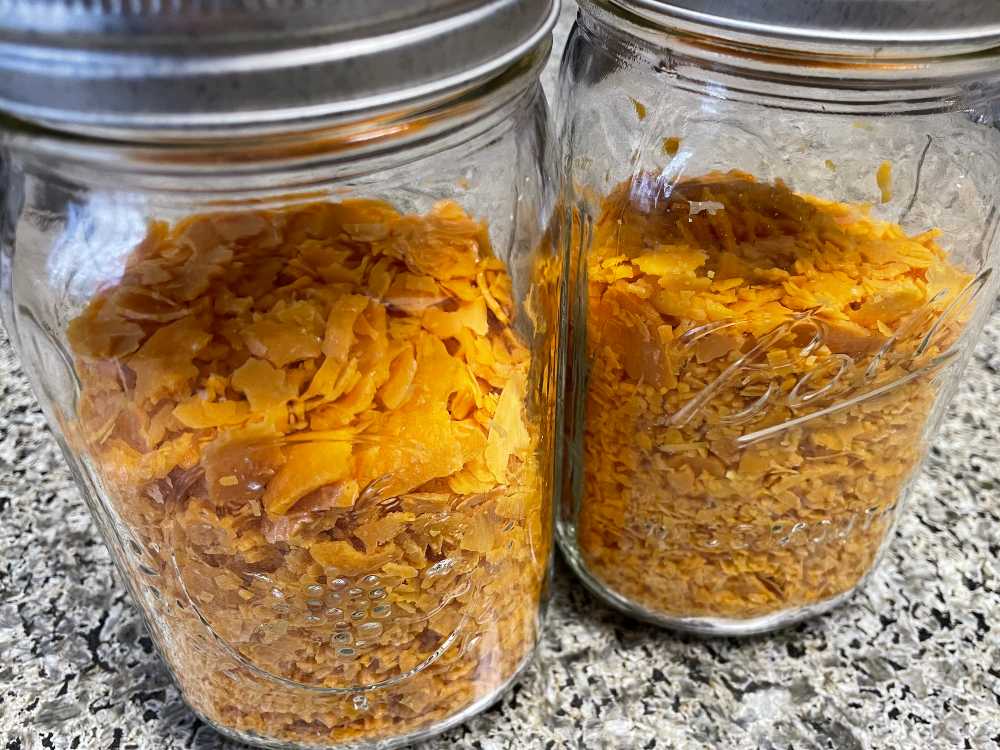
With the ever-increasing prices of store-bought eggs it was time to do some research on dehydrating some. Our stores in western, New York have increased the egg price from springtime @ $1.29 a dozen to $4.99. Every week they seem to go up a bit more.

I know that is not much compared to many people across the nation, but, it is significant for just one item. I do not buy free-range, organic eggs which are over $7.99 - $10.99 a dozen here. Being on a fixed income I have to choose wisely how I budget our money each month. I did research on how to dehydrate the eggs and store them in air-tight containers safely. Below, I will share what I did with you in case you have never tried to preserve them this way.
Dehydrator
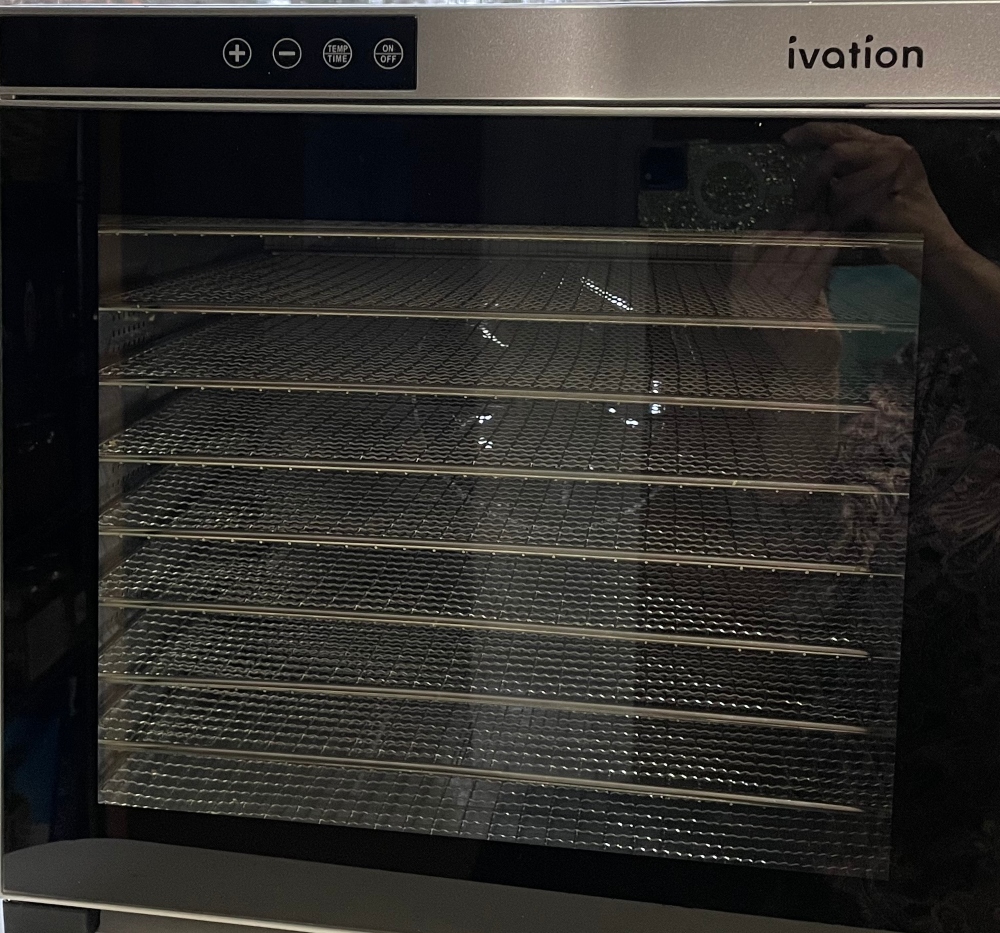
This is the unit that I purchased last spring to help me to dehydrate larger amounts of food. I am so happy I made the decision to do so. It has 10 trays which can hold a lot of my garden produce at one time.
It has been a major asset that has saved me a lot of time. I just set the temperature and the time to the correct amount needed to complete the drying process. There is no need to rotate the trays all day long like I had to with my round dehydrators, which I have used for many years now.
Silicone Mats
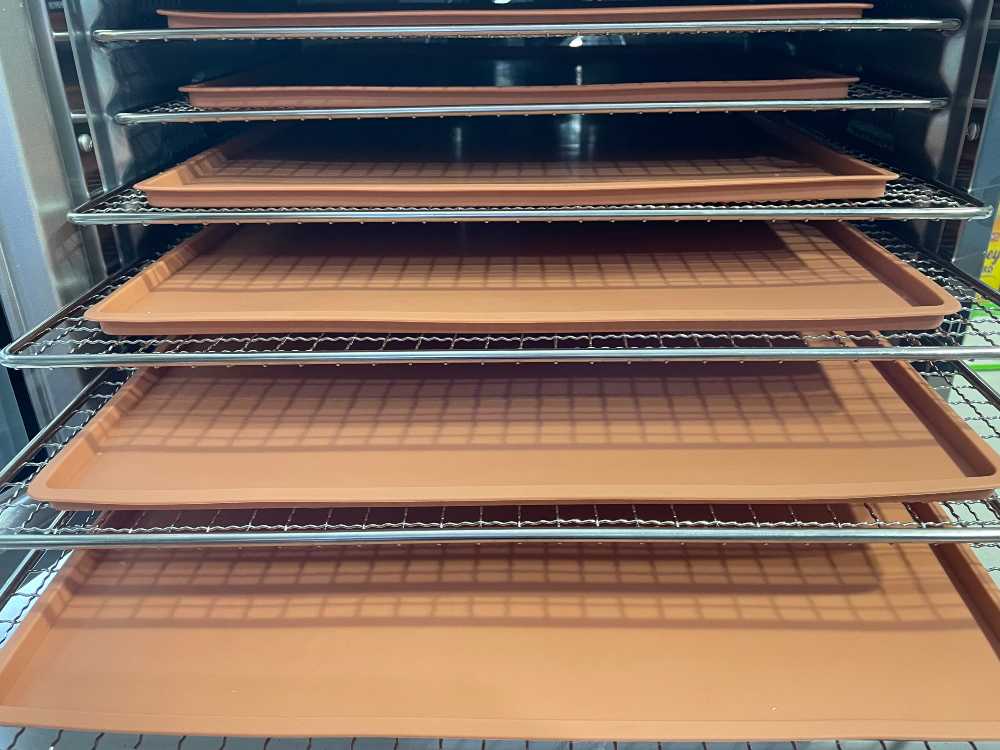
I did purchase this set of 8 silicone mats off of Amazon to use for dehydrating liquid products, such as eggs and fruit rollups for the grandkids. After cracking 3 dozen eggs to try for the first time, I pulsed them in my blender just enough to evenly blend them.
Filling Trays
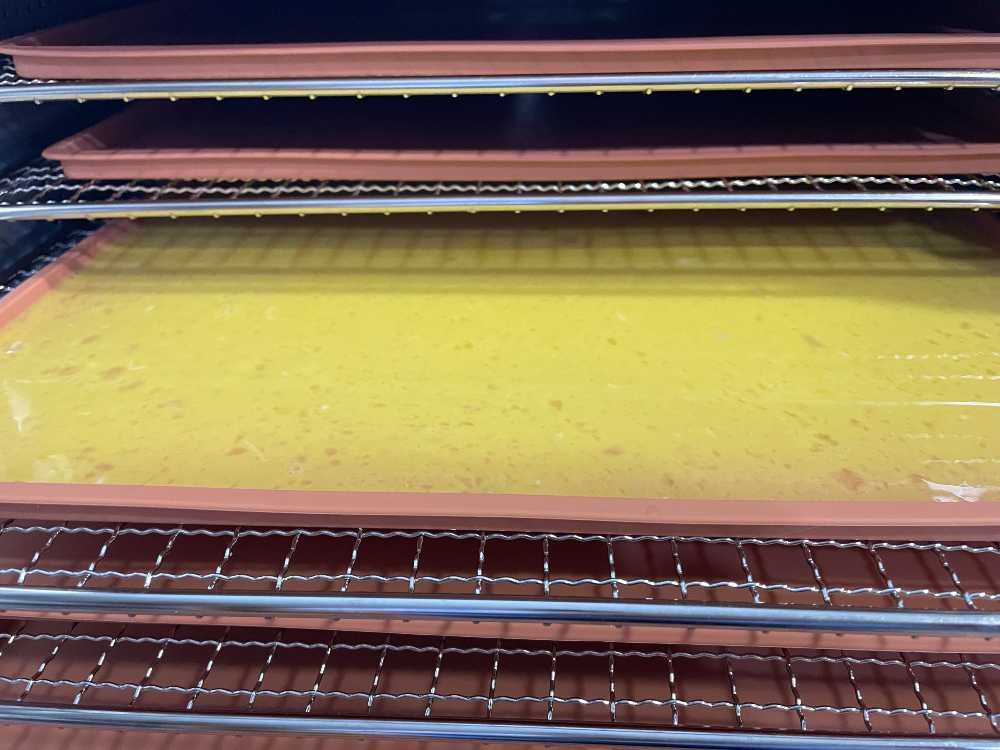
Ready to Dehydrate
I should mention that I only did 5 eggs at a time for each tray. Placing the mats onto the stainless grids first then carefully filling each one and closing it slowly so as not to spill any, ;-)
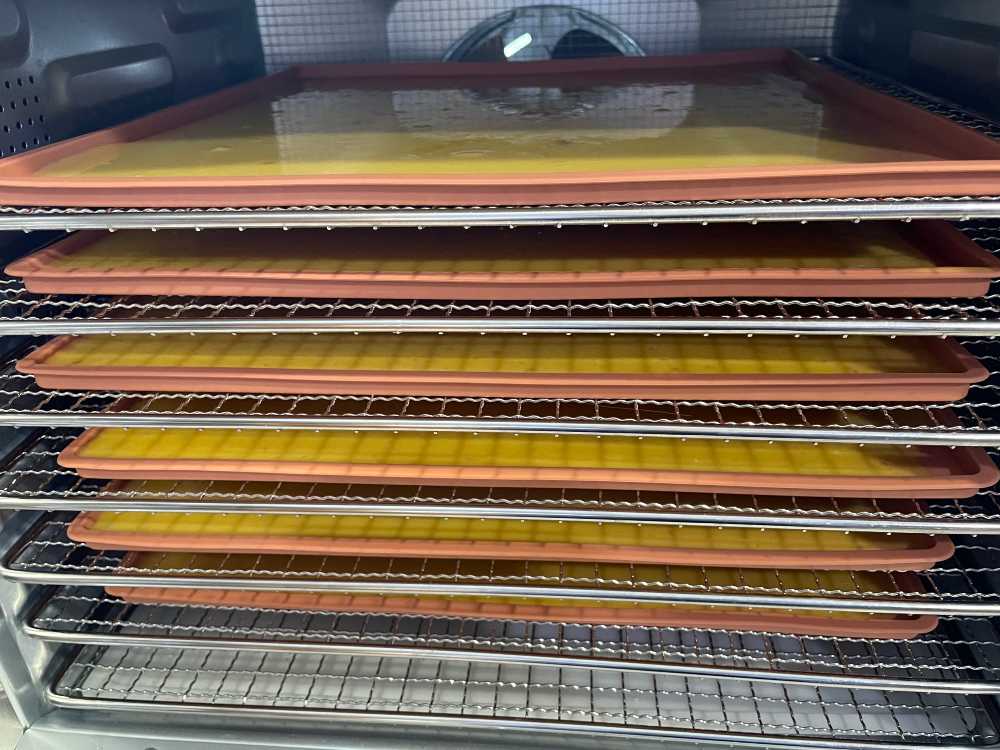
I set the temperature at 120° F and the time for 11 hours. As you can see I should have made sure my machine was perfectly level as one side of each mat was a little bit thicker. When the time was getting close to the end I stopped the machine to remove the driest parts of the egg. Some of the thicker sections had to go for another two hours to finish drying.
Dried Eggs

I was so pleased with how well the eggs dried. Now I will have a few dozen on my pantry shelf for future use and will be especially happy if the prices continue to rise at this rate.
Vacuum Sealed
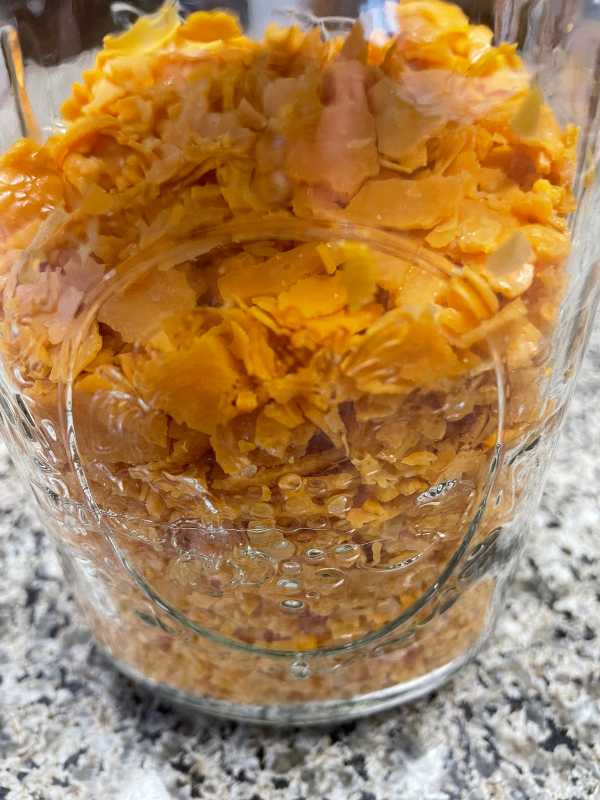
I placed the dried eggs into two different jars and used my vacuum sealer to remove all of the oxygen from the jar. I dated the eggs to know when I did them as they should be used for 2 years maximum due to the fat content of the eggs. I will store them in a dark, cool space along with some of my other pantry items for safekeeping.
Powdering Eggshells
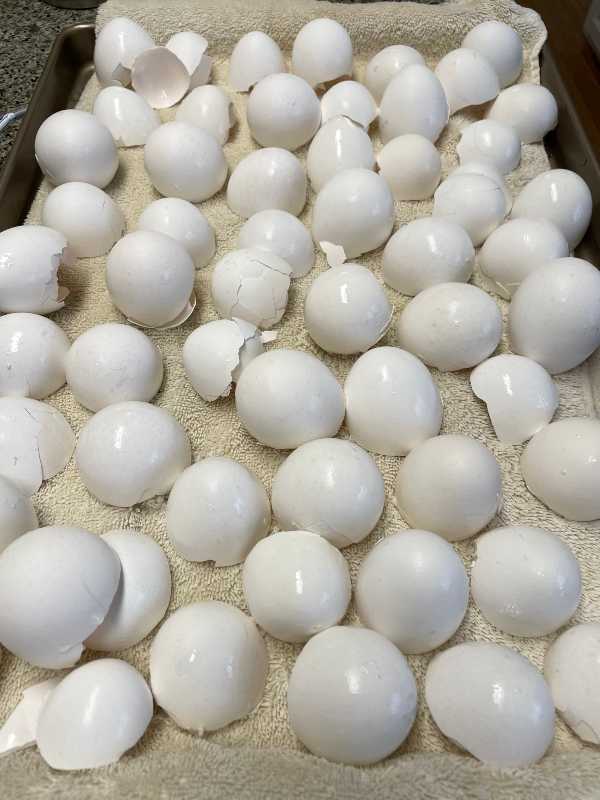
Like many of us that are homesteaders or urban gardeners like myself, we never let anything go to waste. Here I dried the eggshells well for two days and then put them into my blender to powder them. This week I sprinkled them onto the raised beds to add calcium to the soil.
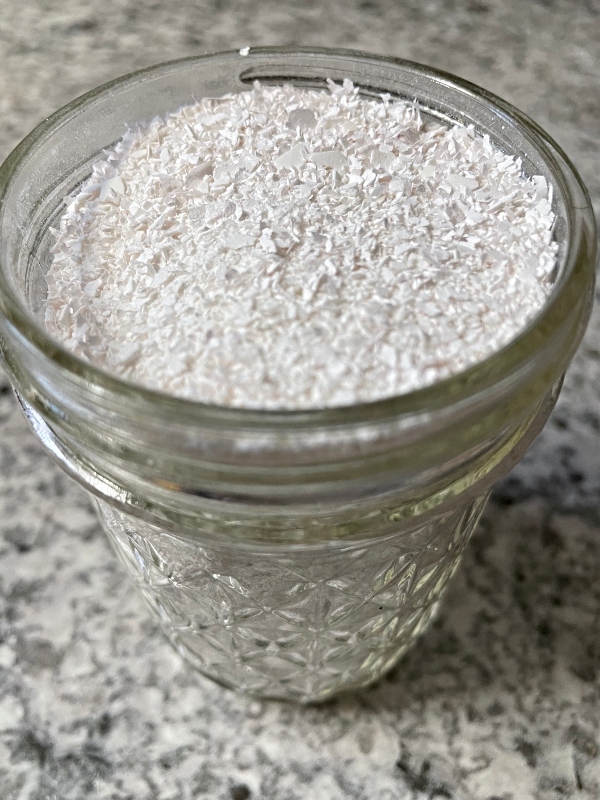
I will continue to save my eggshells all year long and add a small handful to each hole when planting my tomato and pepper plants.
Powdered Eggs
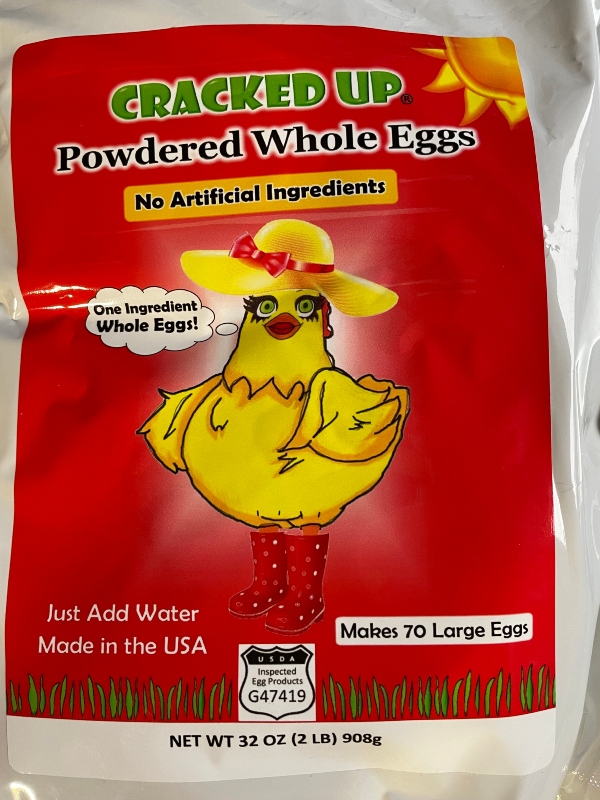
Besides dehydrating a few dozen eggs myself I chose to purchase some powdered eggs too. I know that these are very pricey but I thought about it long and hard and added two bags to my long-term storage as well.
It would be wonderful to hear from some of you about how you choose to store your eggs. Many I know raise their own chickens. If so you are able to water glass them or keep them in cool storage for long lengths of time, unlike storebought eggs.
I hope you enjoyed seeing my latest endeavor on being self-sustainable in these unsure times.
Until next time, this is Sunscape
Sun. Scape. Ing Your Day
